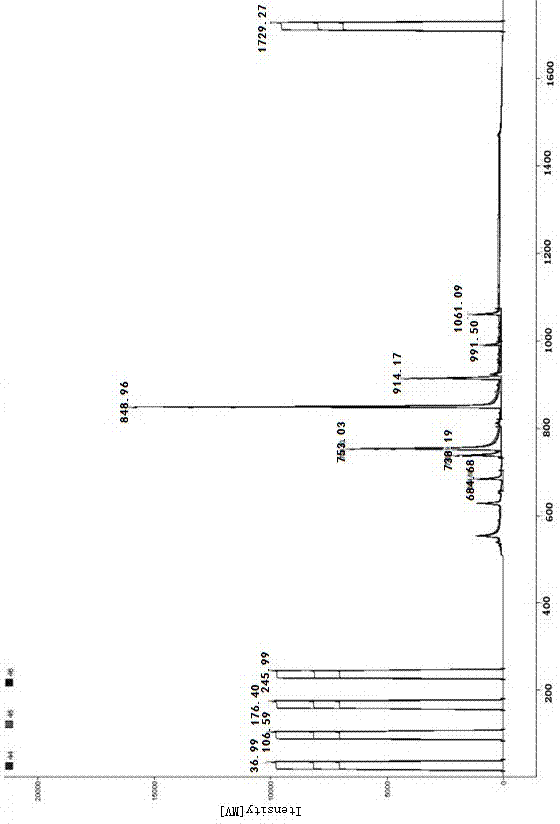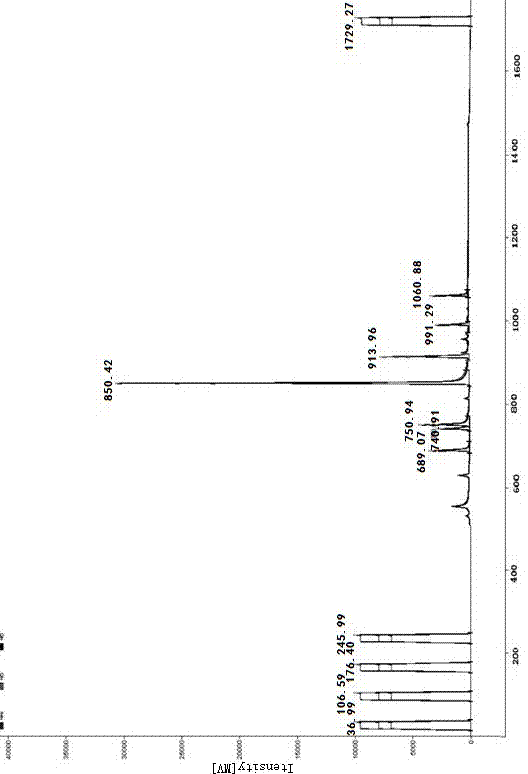Detection method for determining whether liquor is adulterated
A detection method and technology for liquor, applied in the direction of measuring devices, instruments, scientific instruments, etc., can solve the problems of flooding of adulterated liquor, incompetent detection standards, inability to accurately and effectively identify exogenous aroma substances, etc. The method is simple and meets the effect of daily quantitative analysis
- Summary
- Abstract
- Description
- Claims
- Application Information
AI Technical Summary
Problems solved by technology
Method used
Image
Examples
Embodiment 1
[0034] Embodiment 1 Database establishment
[0035] Sample selection: The carbon isotope ratio database of pure liquor was established with 37 pure liquors of 19 brands of the four major flavor types of liquor. The Luzhou-flavor type includes 12 samples of 7 brands including Wuliangye, Luzhou Laojiao, Yanghe, Shuijingfang, Gujing Gongjiu, Century Yingjia and Suzhou Bridge, and the Fen-flavor type includes 11 samples of 5 brands including Fenjiu, Erguotou, and Henan Baofeng Liquor. The sauce-flavored type includes 10 samples of 5 brands of Moutai, Langjiu, Laimao, Xijiu, and Zhenjiu, and the rice-flavored type includes 4 samples of 2 brands of Guilin Sanhua Wine and Bingyu Manor Rice Puree Wine.
[0036] Sample preparation and pretreatment: 37 samples of liquor were stored at room temperature. During operation, the samples should be prevented from being contaminated. Select an appropriate amount of sample liquor, marked as samples 1-37, without pre-treatment, and directly extr...
Embodiment 2
[0040] Embodiment 2 The establishment of detection standard
[0041] We use the data collected in Example 1 to calculate the δ of ethyl acetate and ethyl hexanoate 13 C value difference Δδ 13 C ethyl a-c , acetic acid and hexanoic acid δ 13 C value difference Δδ 13 C acid a-c and each component δ 13 C maximum difference Δδ 13 C max .
[0042] And carry out data analysis on the aforementioned statistical results to obtain Δδ 13 C ethyl a-c In the range of -1.20‰ to 1.30‰, Δδ 13 C acid a-c In the range of -1.35‰ to 1.45‰, each component δ 13 C maximum difference Δδ 13 C max <2.30 ‰ this judgment standard.
[0043] In order to test this standard, we extracted three equal parts of each liquor sample to form three experimental groups, each of which contained 37 liquor samples.
[0044] Then add 0.1 mg / kg ethyl acetate to the first experimental group, add 0.1 mg / kg isoamyl alcohol to the second experimental group, and add 0.1 mg / kg acetic acid solution to the third...
Embodiment 3
[0048] Example 3 Inspection of Liquor Samples
[0049] Using the experimental method in Example 1, we investigated 46 liquor samples of 4 flavor types sold in the domestic market, and measured the ethyl acetate δ of each sample respectively. 13 C ethyl acetate , ethyl hexanoate δ 13 C ethyl caproate , isoamyl alcohol δ 13 C isoamyl alcohol , ethyl lactate δ 13 C ethyl lactate , acetic acid δ 13 C acetic acid Hexanoic acid delta 13 C caproic acid , and calculate the δ of ethyl acetate and ethyl hexanoate 13 C value difference Δδ 13 C ethyl a-c , acetic acid and hexanoic acid δ 13 C value difference Δδ 13 C acid a-c and each component δ 13 C maximum difference Δδ 13 C max .
[0050] According to the established carbon isotope ratio requirements of pure liquor: Δδ 13 C ethyl a-c In the range of -1.20‰ to 1.30‰, Δδ 13 C acid a-c In the range of -1.35‰ to 1.45‰, each component δ 13 C maximum difference Δδ 13 C max <2.30 ‰ is the judgment standard to judg...
PUM
 Login to View More
Login to View More Abstract
Description
Claims
Application Information
 Login to View More
Login to View More - R&D
- Intellectual Property
- Life Sciences
- Materials
- Tech Scout
- Unparalleled Data Quality
- Higher Quality Content
- 60% Fewer Hallucinations
Browse by: Latest US Patents, China's latest patents, Technical Efficacy Thesaurus, Application Domain, Technology Topic, Popular Technical Reports.
© 2025 PatSnap. All rights reserved.Legal|Privacy policy|Modern Slavery Act Transparency Statement|Sitemap|About US| Contact US: help@patsnap.com



